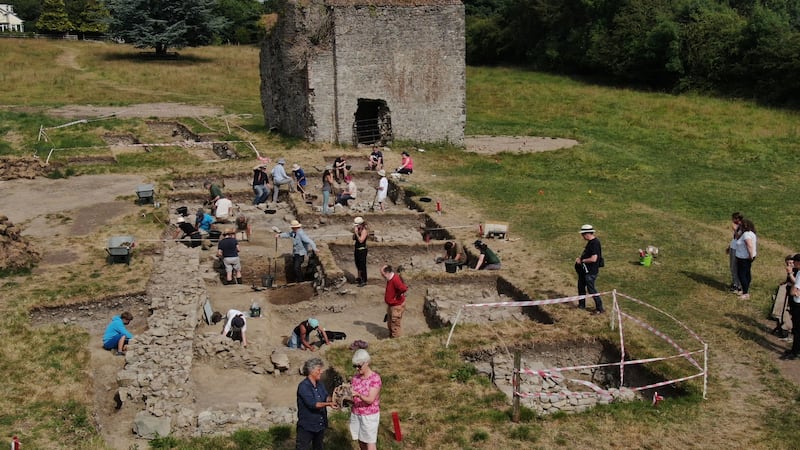Archaeologists have described the first medieval Cistercian stone barn to be excavated in Ireland as a “phenomenal” discovery.
The foundations of the 13th century barn, measuring 25m by 8m, were uncovered during the third and final season of a three-year excavation at the site of a Cistercian community in Beamore, Co Meath.
The barn, which contains evidence of a kiln used to dry corn and a threshing floor, was hailed as an exciting find by husband and wife archaeologist team Matthew and Geraldine Stout.
“Each July for the last three years, we have been excavating this site which was given by the DeLacys to the Cistercians in France who sent a community here to establish a grange in Beaubec which is near Drogheda,” said Ms Stout.
“I only know of three examples of Cistercian stone barns in Ireland but this is the first that has been excavated so we are very excited about it... It’s an exceptional find.

“We uncovered the remains of medieval seeds of wheat and peas and beans, which we believe were stored in this barn, and the size of it indicates that large amounts of crops were grown on the land and stored here.”
Ms Stout added: “We also found evidence of fruits including grapes and figs which had to be imported from France as well as strawberries, raspberries and plums which suggested they had fruit gardens and orchards.”
The excavations have yielded many medieval treasures since they began in 2019, including a rare French building, air fresheners and medieval pottery, which supports a long-held belief that the site was once home to the French Cistercian Foundation of de Bello Becco.
The “hugely significant” site was uncovered after local landowner and historian John McCullen found a medieval window in his field.
“I remember my aunt once telling us as kids that there was a monastery there but I didn’t think anything of it,” he said.
“About 25 years ago, I had a few lads working for me when the top window fell off this building and I noticed red sandstone, which is not found locally.
“I asked the lads to put the window back up but they had all kinds of excuses so I climbed the 30m or so myself to re-insert it. I just knew there was something special about the ruin and so approached Geraldine with a view to getting it excavated.”
Bakery
The excavations were funded by the FBD Trust and administered through the Kilsharvan Community Council.
A sourdough bread bakery held the key in revealing how large the settlement was.
“One loaf equals one monk so the size of the oven might suggest how many came from France to live and work at the monastery. From the depth of the oven, we estimate the monastery was manned by about 45 monks,” Ms Stout said.
“De Bello Becco was flourishing in Ireland in 1302 when it had to pay a tithe of 29s 4d to the Diocese of Meath, which placed it in a group of the highest valued churches in Meath.”
The discovery of remnants of a medieval timber dash urn with a paddle, which was used to churn butter, supported the belief that the monks ran a self-sufficient community.
The team now plans to reconstruct what the site may have looked like when it was inhabited and farmed by the Cistercians. The Community Monuments Fund, run by the National Monuments Service, has also given a grant to Mr McCullen to restore the main building and present the site.
“As we enter the last week of this year’s dig, we are shipping all the finds to the various experts to be dated, logged and eventually stored in the National Museum and we will be writing a report for publication in the coming year,” Mr Stout said. “The site was just a gift that kept giving over the three years and definitely one of our most memorable to date.”




